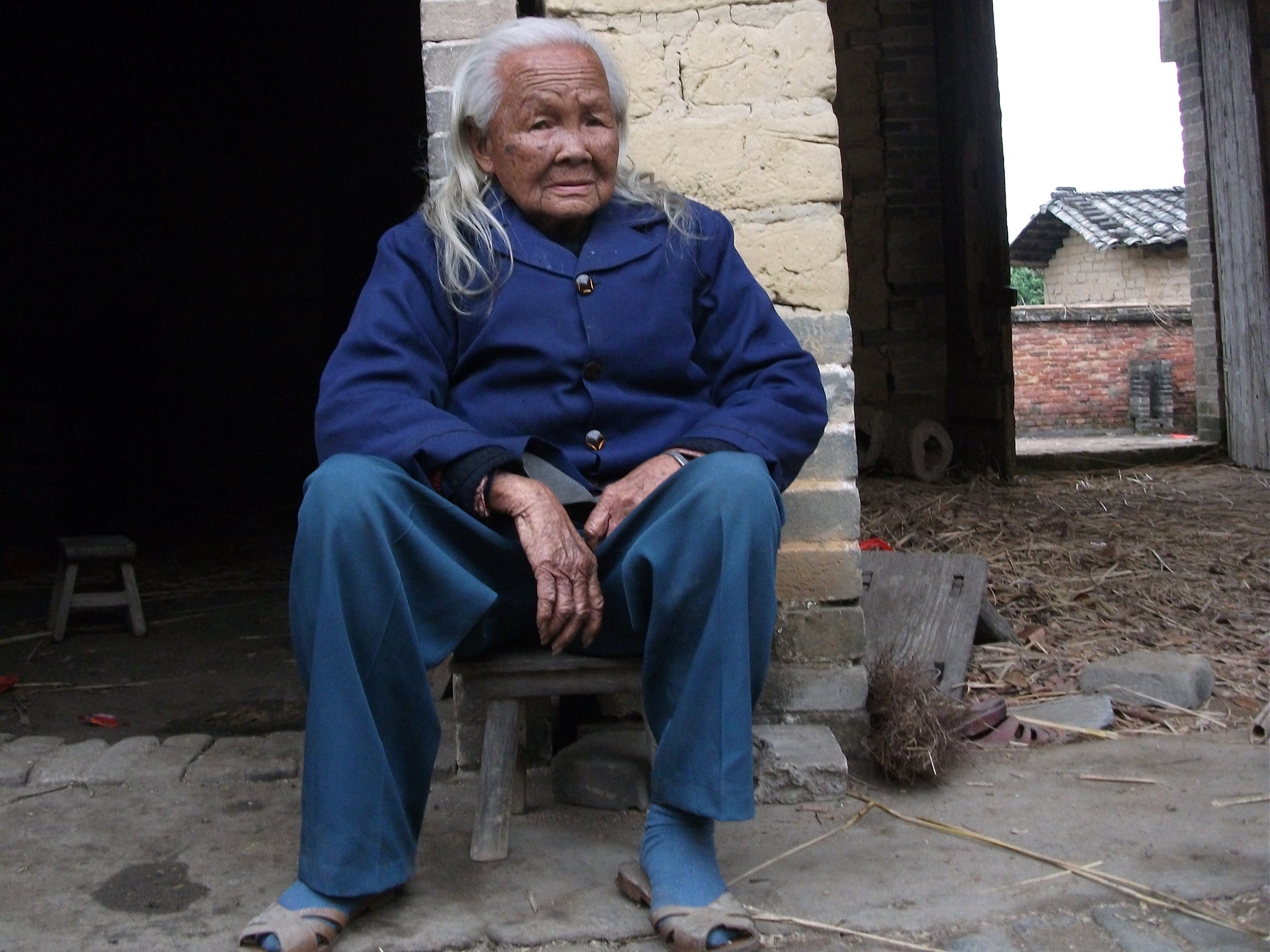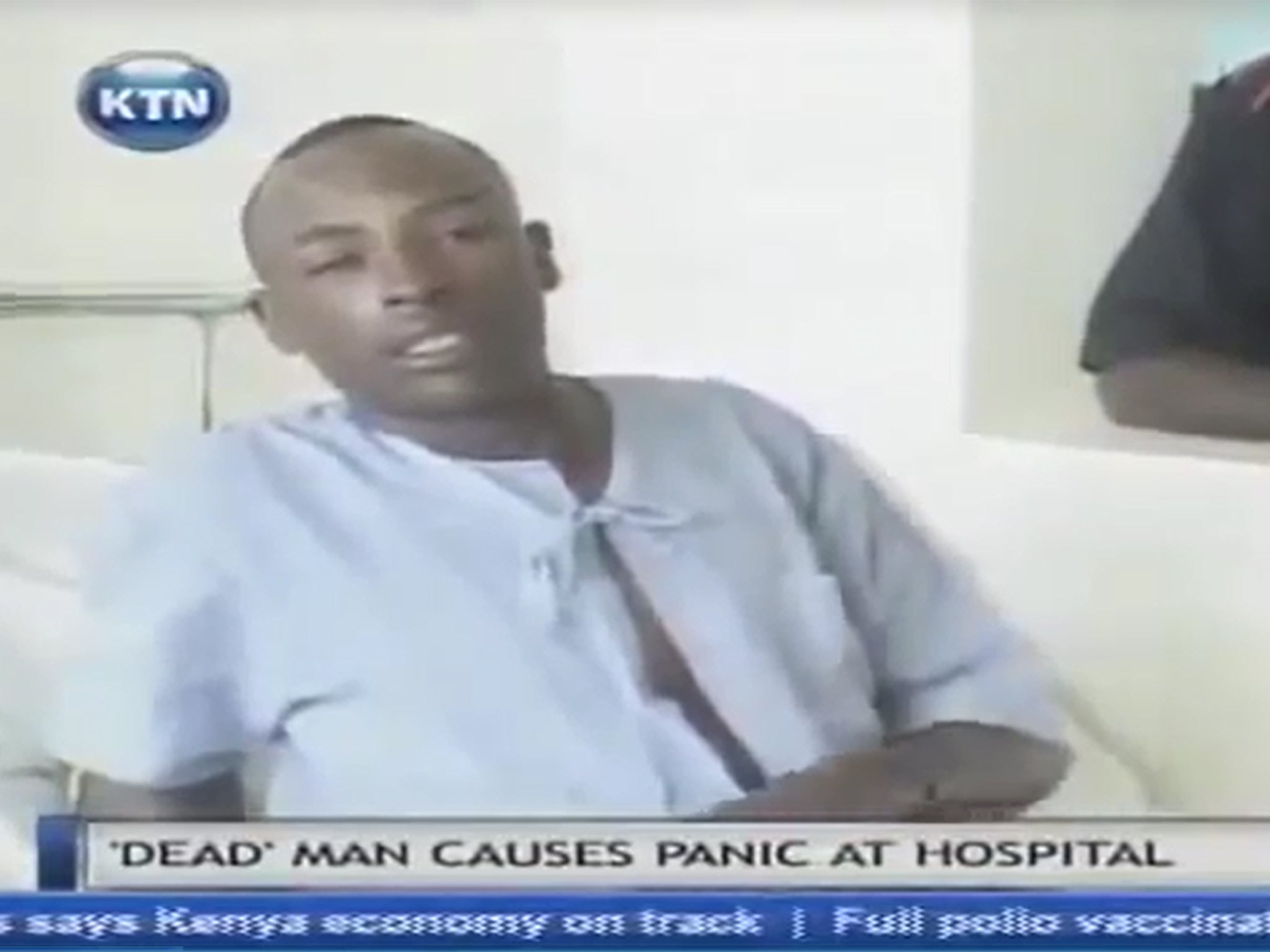True tales of people coming back to life during funerals and in mortuaries after being declared dead
Think you could never be buried alive? Consider these cautionary tales

In life, conventional wisdom assures us, only two things are certain: death and taxes.
Recent goings on in the Peruvian city of Tingo Maria, however, would suggest that the latter is more certain than the former.
Here it was that in the middle of the open casket funeral of Watson Franklin Mandujano Doroteo, declared dead on October 21, mourners became convinced they could see the 28-year-old’s rib-cage rising and falling as he continued to breathe.
A doctor was reportedly summoned and confirmed Mr Doroteo showed vital signs.
The dead/undead Mr Doroteo was transferred from his coffin to the hospital.
Alas, as The Independent has now reported, this resurrection story does not have the happy ending the mourners had hoped for.
At the hospital, the young man was, for the second time, confirmed dead.
But his relatives still claimed he might have been alive at his funeral, and, if nothing else, Mr Doroteo’s story serves as an unsettling reminder that sometimes, when people are declared dead, it ain’t necessarily so.
As previous generations knew all too well. That’s why in the 18th and 19th centuries, some inventors sought to get rich by selling to the anxious public a marvellous new contraption: the safety coffin.
Upon finding oneself buried alive, as an 1868 patent put it, one had merely to summon help by pulling the cord attached to an alarm bell on the surface. The Vester Burial Case safety coffin even came with add-ons like a ladder “so that, should a person be interred ere life is extinct, he can, on recovery to consciousness, ascend from the grave and the coffin by the ladder.”
Those living in the modern, medically advanced 21st Century may scoff at such excesses of caution. But before you do, perhaps you should consider a few cautionary tales of the ‘waking dead’.
Take, for example, the strange, and supposedly “miraculous” case of Mr Walter Williams.
On February 26 2014, in the southern US state of Mississippi, Holmes County coroner Dexter Howard was called to the hospice that had become the final home of 78-year-old Mr Williams.
Having checked for a pulse and found none, the coroner declared Mr Williams dead.
He completed his paperwork, and transported Mr Williams, inside a body bag, to the embalming room of Porter & Sons Funeral Home in Lexington.
But before the embalming process could begin, the body bag started moving.
“We noticed his legs beginning to move, like kicking," Mr Howard told CNN. "He also began to do a little breathing."
Mr Williams was alive and literally kicking.
The astonished coroner could think of only one rational explanation: perhaps a defibrillator implant, previously placed beneath the skin on Mr Williams’ chest, had jump-started his heart after he was placed in the body bag.
But the “bottom line”, Mr Howard insisted, “Is it's a miracle."
In recounting this modern "miracle", CNN touched upon another quirk in the death business: across the world, procedures and personnel for declaring death can vary.
In the UK, coroners like Mr Howard cannot declare death: the job is left to two medical practitioners who have to have been registered for at least five years.
But in the US the coroner can decide, and at the time of Mr Williams’ “miracle”, CNN reported that 1,500 American counties elected their coroners, and most didn’t require medical degrees.
Mr Howard did have 22 years’ experience as county coroner and deputy county coroner, but he was an elected official, not a doctor.
And about two weeks later when Mr Williams died for good, it was Mr Howard who again declared him dead.
"Every case I do is a learning experience," said Mr Howard. And when CNN asked him what he had learned from this case, he replied: "That miracles can happen."
Fortunately, Mr Williams’ family seemed to agree.
"It was a two-week miracle for me, and I enjoyed every minute of it,” said the now-truly-dead man’s nephew Eddie Hester.
Not all families of the ‘resurrected’ get so long with their loved one.
In 2011, in in Kazan, Russia, as mourners filed past Fagilyu Mukhametzyanov’s open coffin, the hitherto ‘dead’ heart attack victim reportedly ‘woke up’ screaming at the realisation of where she was lying.
It did not end well, according to the reports.
Husband Fagili Mukhametzyanov, 51, was quoted as saying: “Her eyes fluttered and we immediately rushed her back to the hospital but she only lived for another 12 minutes in intensive care before she died again, this time for good.”
Some reports suggested that 49-year-old Ms Mukhametzyanov had died of another heart attack brought on by the shock of realising she was at her own funeral.
Mr Mukhametzyanov was said to have been understandably angry at the doctors who first declared his wife dead. But even for experienced medical practitioners, declaring death can sometimes be a complicated business.
Death is now usually defined as involving “the irreversible cessation of brain-stem function”, but there remain debates within the medical profession as to what exactly death is and what tests should be done to confirm it.
Adding to the difficulty are conditions like narcolepsy, causing extreme drowsiness, which can combine with catalepsy, a nervous disorder that slows breathing, reduces sensitivity to pain and stiffens the muscles as if rigor mortis has set in – to the point that some people seem pretty dead.
Then there is severe hypothermia, (where body temperature drops below 28C), which can bring on something akin to a state of hibernation and make it appear as though someone is brain dead.
Which might help explain the case of 91-year-old Janina Kolkiewicz, who spent 11 hours in mortuary cold storage after being declared dead by a family doctor in Ostrow Lubelski, Poland, in 2014.
Her death certificate had already been written by the time the mortuary attendants noticed that the ‘dead woman’ was wriggling in her body bag.
Apparently none too disturbed by her experience, Ms Kolkiewicz warmed up with a bowl of soup and two pancakes.
In Poland, it seems, the job of mortuary attendant can be more lively than you might expect.
Two years after Ms Kolkiewicz’s non-death experience, in November last year, after a heavy night on the vodka, a 25-year-old named only as Kamil reportedly woke up wondering where he was.
A common enough experience for the morning after the night before, but this time Kamil realised he was inside a mortuary refrigerator.
Unbeknown to him, he had suffered a cardiac arrest after leaving the pub in the Polish town of Kamienna Góra, and had been declared dead.
According to local press reports, a hospital security guard heard sounds coming from one of the mortuary ‘coolboxes’.
“With shaking hands,” the guard was quoted as saying, “I opened one of the doors, and I found a naked body asking me for a blanket.”
If the reports are to be believed, once Kamil had warmed up (and got dressed) he went back to the pub.
There was a similar shock in a hospital mortuary in the Egyptian port city of Alexandria in 1999, after a holidaying teacher, Ali Abdel-Rahim Mohammad, 32, collapsed while swimming off a nearby beach.
He too was declared dead. He too was placed in mortuary refrigerator. He too woke up.
"I found myself locked inside tight walls of metal and heard whispers of people I didn't recognise," Mr Mohammad told the Al-Akhbar newspaper.
Too cold to speak, Mr Mohammad did the only thing he could to draw attention to the fact that he was still alive. The ‘corpse’ grabbed the hand of a mortuary attendant who was trying to close the fridge door.
Screaming “help us!” the attendant fled, along with a family who come to identify another (dead) body in the mortuary.
“Tottering on his frozen feet,” according to the BBC report, the walking dead teacher went in search of a phone to call his family.
When he got through to them, they were very confused. Friends who had been on the beach with Mr Mohammad had told his family he was dead.
Another set of mortuary workers “took to their heels screaming” in January 2014 when Paul Mutora woke up in the morgue at Naivasha District Hospital in Kenya.
The 24-year-old had tried to take his own life by swallowing insecticide.

According to Kenyan newspaper reports, he was declared dead. In the morning Mr Mutora's father and other relatives visited the morgue to view his body.
In the afternoon they returned home to start arranging the funeral, only to be told that after about 24 hours on a mortuary slab, Mr Mutora had terrified the attendants by ‘coming to life’.
Dr Joseph Mburu, the superintendent in charge of the hospital, was quoted as saying atropine given to Mr Mutora to counteract the effects of the insecticide may have made him appear dead by drastically slowing his heart rate.
“This might have confused medical personnel,” said Dr Mburu, “But the victim was saved before he could be embalmed.”
The reports said Mr Mutora apologised to his father and, presumably, the mortuary attendants.
At least no-one had started on his autopsy, which is what happened to Venezuelan man Carlos Camejo.
In 2007 Mr Camejo, 33, was reportedly declared dead after a car crash. He was taken to the morgue. According to the El Universal newspaper, medical staff only realised that Mr Camejo was still alive when they cut into his face to start the autopsy.
“I woke up because the pain was unbearable,” the newspaper quoted Mr Camejo was saying.
His wife went to the morgue expecting to identify his body and found him waiting in the corridor, alive.
Mr Camejo was photographed showing the scar on his face and a hospital document ordering an autopsy to be done on his dead body.
Perhaps, then, we should understand why the great George Washington insisted on such risk-averse preparations for his own funeral.
In December 1799, as he lay dying, this founding father of the US had requested: “Have me decently buried [but] do not let my body be put into the vault in less than three days after I am dead."
The great man was duly kept unburied in a mahogany casket for the required three days, but for him, this precaution against being buried alive proved unnecessary.
For “zombie gran” Liu Xiufeng of Guangxi Province, China, however, it was a different story.
In 2012 a neighbour found the 95-year-old in bed and seemingly lifeless, about two weeks after she had suffered a head injury in a fall.
"No matter how hard I pushed her and called her name,” said Chen Qingwang, “She had no reactions.”
In keeping with local custom, the ‘dead’ woman was laid inside a coffin in her house for several days so friends and relatives could pay their respects. Mr Qingwang decided not to bother with nailing the coffin lid down.
The day before the funeral, and six days after Ms Xiufeng had ‘died’, Mr Qingwang returned to her house – to find the coffin empty, its lid removed and the ‘corpse’ gone.
“We were so terrified, and immediately asked the neighbours to come for help," he was quoted as saying.
They found Ms Xiufeng sitting on a stool in her kitchen, cooking.
She reportedly explained: “I slept for a long time. After waking up, I felt so hungry, and wanted to cook something to eat.”
Exiting the coffin, she added, had not been easy: “I pushed the lid for a long time to climb out.”
Maybe those safety coffins weren’t such a bad idea after all.
Join our commenting forum
Join thought-provoking conversations, follow other Independent readers and see their replies
Comments